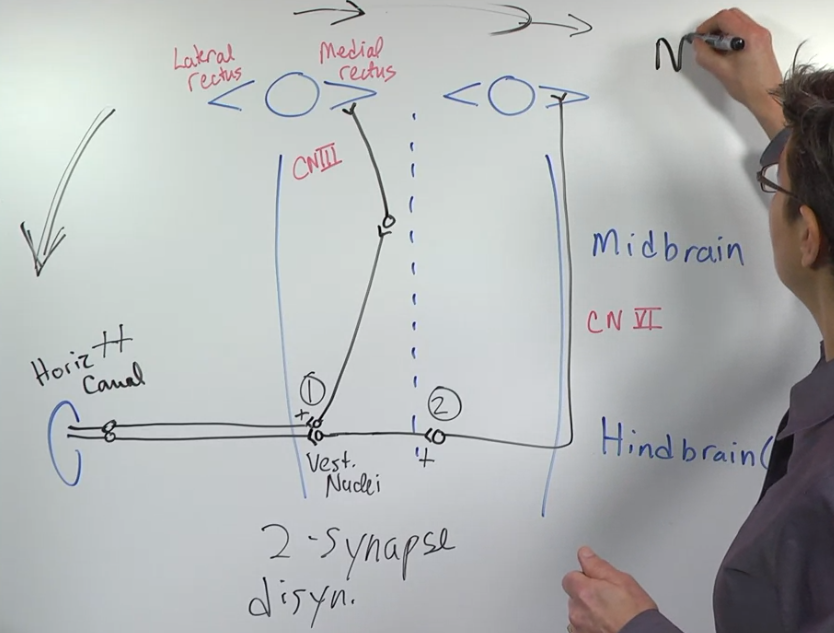Neural Circuitry of the VOR
 I. The Vestibular System and Motor Control
I. The Vestibular System and Motor Control
- The vestibular system is crucial for balance and spatial orientation.
- It primarily sends signals to the motor system for coordinated movement responses.
- The vestibulo-ocular reflex (VOR) exemplifies this close relationship.
II. The VOR Circuit (Simplified)
- Sensory information originates in the horizontal canal of the inner ear.
- This information travels to the vestibular nucleus located in the hindbrain.
- The vestibular nucleus relays the signal to motor neurons controlling the six extraocular muscles responsible for eye movement.
III. Disynaptic Reflex for Speed
- The VOR pathway is a disynaptic reflex, involving only two synapses.
- This minimal number of connections allows for an incredibly fast reflex.
- High speed is essential for the VOR to effectively stabilize vision during head movements.
IV. VOR Function During Head Rotation
- A head rotation in one direction stimulates the horizontal canal on the opposite side.
- This stimulation activates specific motor neurons within the vestibular nucleus.
- One motor neuron causes eye abduction (movement away from the nose) on the opposite side of the head rotation.
- Simultaneously, another motor neuron adducts (pulls towards the nose) the other eye.
- Consequently, the eyes move in the opposite direction of the head movement, preserving a fixed gaze.
V. Next Steps
- The lecture will explore nystagmus, a condition characterized by involuntary eye movements. Nystagmus Adapting the VOR